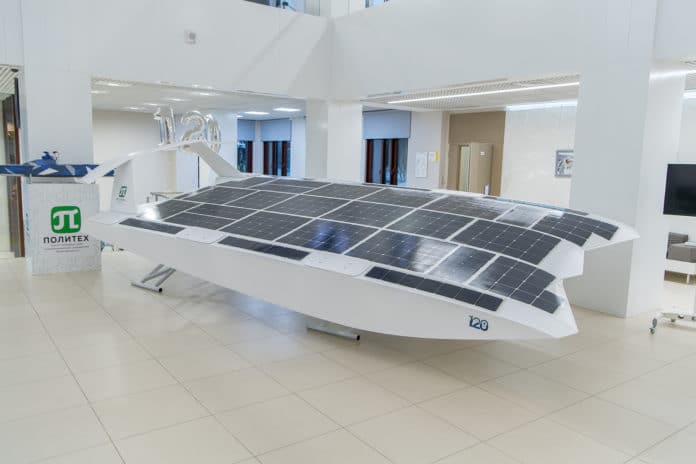A group of young Russian engineers from Peter the Great St.Petersburg Polytechnic University (SPbPU) has announced that they have invented a new wing vehicle concept, “a ‘flying boat’ is capable of developing high speed; and its power reserve is unlimited.” The small boat named “Storm-600” is a wing-in-ground-effect vehicle (GEV) supported by the AI system.
It can achieve sustained times on water surfaces through the ground effect, which is the interaction between the wings of a vehicle and flat surfaces. The ground effect vehicles are often used for water patrols, to conduct search and rescue operations, and to deliver cargo.
“The device literally floats above the water. There is a screen effect when an aerodynamic cushion is created under the wing of the aircraft. Our wing-in-ground-effect vehicle has long wings, thus it moves along the air cushion itself,” said Alexei Maistro, the Head of the project.
Solar panels are installed on the hull and wings of the ship, while a storage system is integrated into its core. Operating under the control of an artificial intelligence system that plans energy consumption, triggering “special storage devices” – which the team does not detail – responsible for distributing the energy, the wing boat can move continuously over the water while the Sun shines or until your batteries run out.
Being driven by electric motors powered by solar energy, the wing boat became lighter by dispensing tanks and liquid fuel. For this reason, the researchers believe that their vehicle could reach higher speeds than conventional GEV vehicles. The prototype has a top speed of 200 km/h (124 mph), but the team already has plans to make it reach 300 km/h (186 mph).
“We installed a laser radar (LiDAR) on the boat to train the wing-in-ground-effect vehicle to recognize the obstacles and avoid them. And the radio radar was also added to increase the range of the vision system to 30 miles,” added Alexei Maistro.
The pilot was replaced by artificial intelligence technology, also releasing the vehicle from the weight of the necessary structure to accommodate a human.
The final prototype of the Storm-600 vehicle will be tested in the summer of 2020 on the Neva River in Saint Petersburg.
